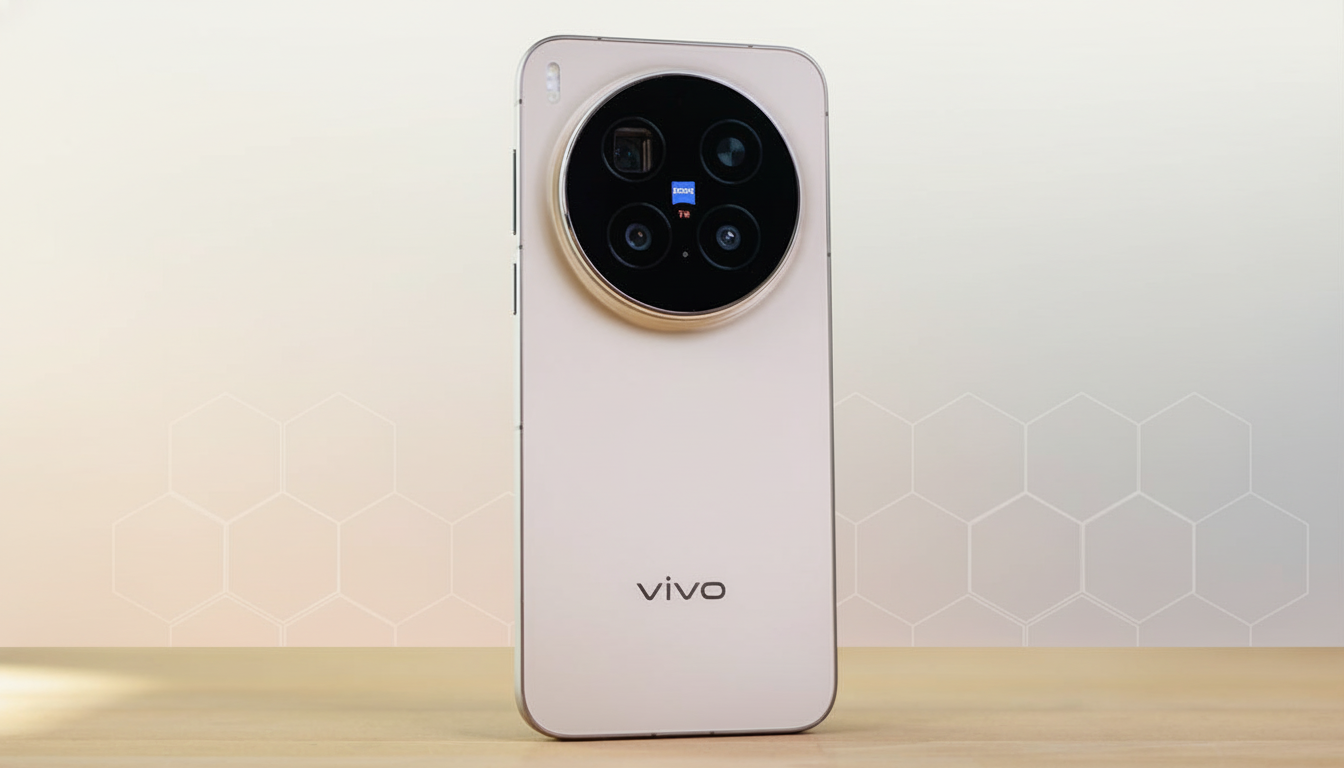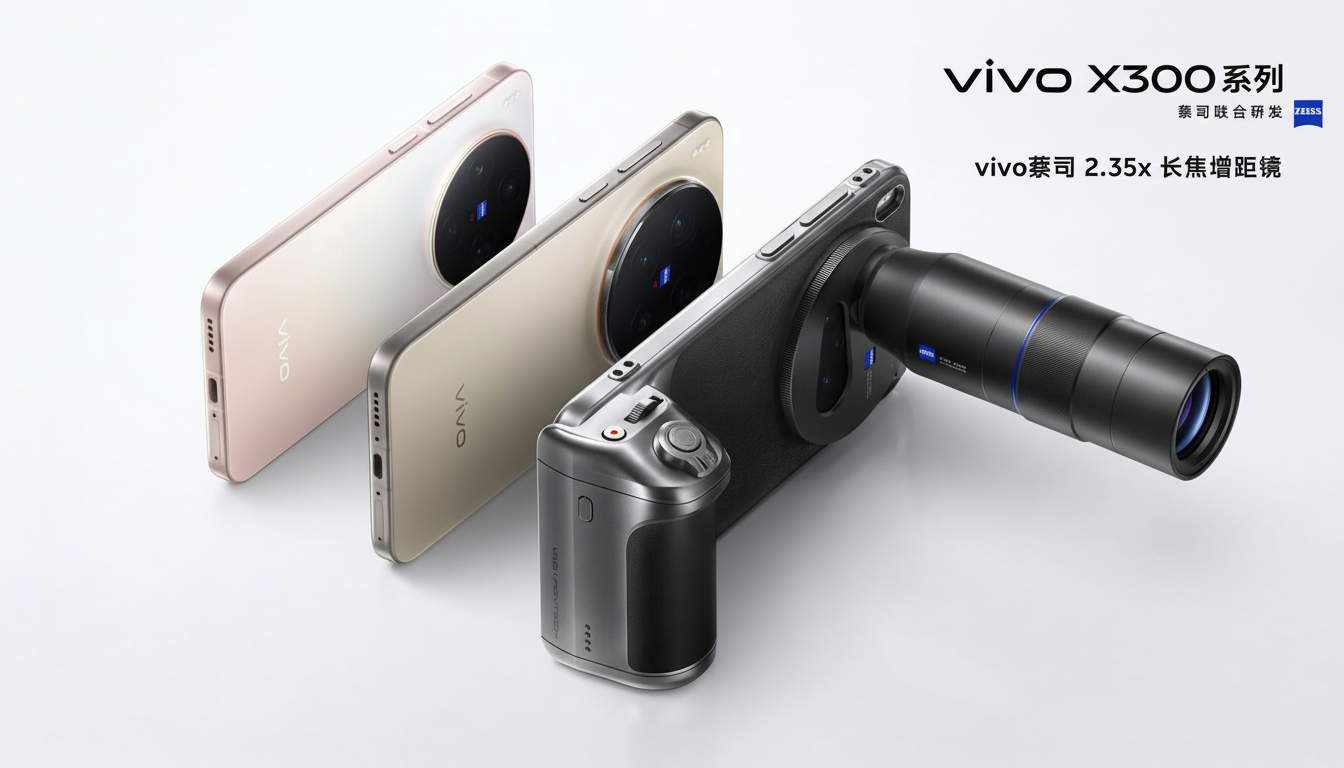Vivo is lifting the wraps off the X300 and X300 Pro for the worldwide market, putting a 200MP telephoto lens and maker-centered video tools at the core of its flagship push. The Pro forefronts with a ZEISS APO 200MP telephoto camera and new codecs, while the standard X300 comes with a 200MP primary in a more compact body. Both arrive with updated software, bigger batteries, and robustness that suits real everyday use. While flagship devices from Vivo often differ mainly in camera details, each one aims to deliver a different camera experience.
Camera systems emphasize 200MP telephoto innovation
The X300 Pro flips the standard by setting up the 200MP telephoto lens as the main attraction. The 200MP ZEISS APO tele lens is designed to keep micro-contrast and color matching at profound distance. It uses a 50MP “gimbal-grade” primary camera with a co-developed Sony LYT-828 sensor and a 50MP ultra-wide lens. Similarly, the X300 utilizes a 200MP Ultra-Sensing HPB primary with a 50MP ZEISS APO telephoto and a 50MP ultra-wide lens. Both phones have a 50MP wide selfie camera with autofocus and are dedicated to group shots and handheld vlogging.
- Camera systems emphasize 200MP telephoto innovation
- ZEISS imaging features and long-range portrait modes
- Video tools spotlight 4K 120fps and Dolby Vision
- Displays, audio, and durability upgrades explained
- Battery capacities, charging speeds, and colors
- OriginOS 6, update policy, pricing, and availability

ZEISS imaging features and long-range portrait modes
ZEISS also takes center stage in image tuning: the inclusion of ZEISS Natural Portrait produces more realistic skin tones, Multi-Focal HD Portrait refines subject separation at varying focal lengths, while Night Portrait differentiates the competitors in urban and evening contexts. The Pro’s innovation is the ZEISS Mirotar-inspired bokeh and 20x long-range Motion Snapshot, intended for extreme distances, such as stage performances or field sports. The more advanced models will also have interchangeable components for the ZEISS 2.35x Telephoto Extender Kit, but availability will differ by country.
Video tools spotlight 4K 120fps and Dolby Vision
Video is the primary camera focus point. Both record in 4K 120fps, but the X300 Pro showcases 4K 120fps Dolby Vision and 4K 120fps 10-bit Log. These profiles allow significant post-correction and adjustment in Dolby Vision post-mastering or color grading rooms. The Pro has a Stage All-in-One Recording solution that captures high-resolution photos while the camera films, as well as Dual-View Stage Video with two split-perspective clips without third-party applications. Both units are powered by MediaTek’s Dimensity 9500, and the Pro adds an Imaging Chip VS1 that accelerates noise reduction and multi-frame processing.
Displays, audio, and durability upgrades explained
Displays are 120Hz 8T LTPO panels: the X300 is 6.31 inches at 1216×2640, and the Pro is 6.78 inches at 1260×2800. Both panels additionally support HDR10+ and Netflix HDR, and carry SGS Low Blue Light and TÜV Flicker-Free certifications, as OLEDs are likely to flicker even at high frame rates.

- X300: 6.31-inch 120Hz 8T LTPO, 1216×2640 resolution
- X300 Pro: 6.78-inch 120Hz 8T LTPO, 1260×2800 resolution
An ultrasonic in-display fingerprint sensor is included, as well as dual stereo speakers and IP68/IP69-rated protection. The Pro is also able to deliver Dolby Vision playback. Ergonomics make a big difference: the X300 is 7.95mm thin and weighs 190g. The Pro is 8.5mm thick and weighs 226g due to its larger camera install and full-cell battery. Summit Black, Mist Blue, Iris Purple, Halo Pink, and Blue Halos extend from Phantom Black on the X300 and Vanish Black on the Pro.
Battery capacities, charging speeds, and colors
The X300 is supplied with a 6,040mAh battery, and in most regions, the Pro has a 6,510mAh cell. Each battery is backed by 90W FlashCharge and 40W wired charging. With BlueVolt, the cell is presented with enhanced silicon negative electrodes. Vivo’s interpretation of the tech boasts that the device may be used to make a voice call for four minutes from 1% in around four minutes, providing a brief but crucial cushion in case of an emergency. For various reasons, the Pro may be offered with a 5,440mAh version sold in particular European nations, which is a shock compared with the X300.
- X300: 6,040mAh, 90W wired charging
- X300 Pro: 6,510mAh (most regions) or 5,440mAh (some European markets), 90W wired charging
OriginOS 6, update policy, pricing, and availability
OriginOS 6 is making its worldwide premiere. It is based on Android 16 and branded as more fluid and legible, with the Smooth Engine and a fully renovated Origin Design system. You can quickly update via Origin Island and Flip Cards, and use Office Kit to speed up file transfers between the X300 and your PC. It’s got AI primarily everywhere else because the X300 uses Google’s new Gemini 16 chipset for more substantial AI jobs and a reorganized privacy panel under the Vivo security belt. Five-year guarantees for OS updates and seven years of support patches have been announced, which are good but behind the seven-year OS assurance that other companies have lately made.
The X300 Pro starts at €1,399, and the X300 starts at €1,049, with assorted packages and release dates depending on your location. The standard version is the balanced alternative: smaller, with a 200MP primary camera, and it covers all categories for everyday artists. The X300 Pro is a specialized model that caters to mobile photographers and filmmakers who are serious about their films: a 200MP telephoto with enhanced codecs and dedicated photography silicon. In a year when telephoto technology is a key differentiator, a 200MP telephoto sensor is a daring move. Vivo’s high-end X300 brand seems made for consumers who spend almost as much time in the edit bay as they do in the camera roll.

